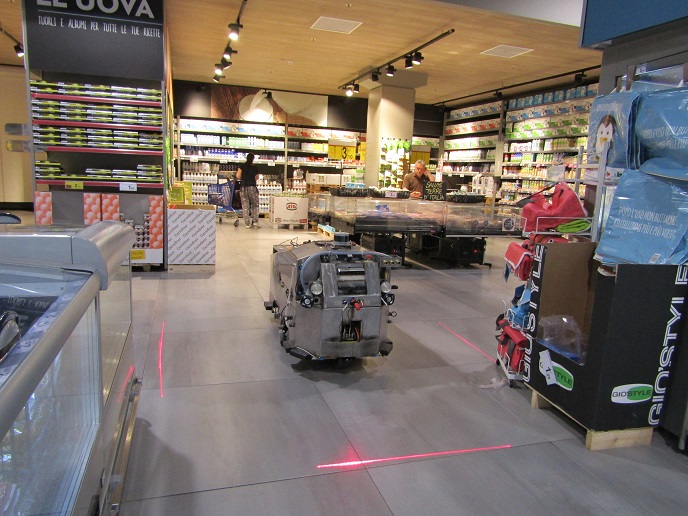An end to the mop and bucket, pass floor-cleaning duty to robots
Currently there is no robot that satisfies the requirements of professional users and cleaning services companies. Floor washing tasks are demanding in a variety of ways: the operation needs to be autonomous, areas have to be navigation precisely, the safety of people and goods has to be assured, the robot has to be managed by cleaning staff and must be able to operate on demand during opening hours. Other obstacles such as the presence of multiple robots working at the same time, and programming issues, all have to be taken into account. An EU-supported project called FLOBOT has developed a robot that can take all these hurdles in its stride and they’ve been trying it out at supermarkets, airports, and public buildings. Dr Panayiotis Philimis, CEO of CyRIC - Cyprus Research & Innovation Center Ltd, and FLOBOT project coordinator, explains why current options on the market don’t meet the users’ needs, “They’re expensive and their operational speed and real automation and autonomy are limited.” FLOBOT is out to offer more. Dr Philimis points out that while other robotic cleaners focus more on the robotic side of things than on the cleaning, FLOBOT’s consortium includes a major scrubber-drier manufacturer that can guarantee that the cleaning performance of the robot will be of the highest quality. “The team also includes robotics experts and their work made it possible to fully automate FLOBOT’s operation, including functions proposed for the first time for such a machine, such as a docking station to fill-in the water tank, empty and clean the wastewater tank and recharge the battery.” Their system includes novel safety features, including a system to proactively inform people about the robot’s presence and intentions. But what really makes Dr Philimis proud is that FLOBOT is expected to be marketed at a lower price than its competitors. A testing time Numerous tests took place during project, both in controlled and real-world environments. The first tests took place in Verona, where the scrubber manufacturer (FIMAP) is based. These included autonomous missions in a simple, empty room and then more advanced tests in FIMAP’s warehouse during working hours. “There were people and machines moving around and FLOBOT needed to operate efficiently and safely,” Dr Philimis explains. Once that worked, they moved to real-world demonstrations and pilot validations in 4 different sites. The first group of such tests was organised in a Carrefour hypermarket, one of the project partners, in Carugate, near Milan. “We successfully tested the robot during operational hours and collected feedback and data for further improvements. Then, about a month later, we repeated the testing in the same location, with the updated modules.” As the last step of the validation and qualification review, they organised testing weeks, during operational hours, in Lyon’s Saint Exupery airport, at a nearby warehouse, and in a hospital. “All pilots were successful, allowing us to validate FLOBOT in different scenarios and conditions, while collecting data for further improvements,” says Dr Philimis. “Re-investing employee time in more crucial services improves also customer satisfaction and quality of services and will free-up people to do more interesting tasks,” he adds.







